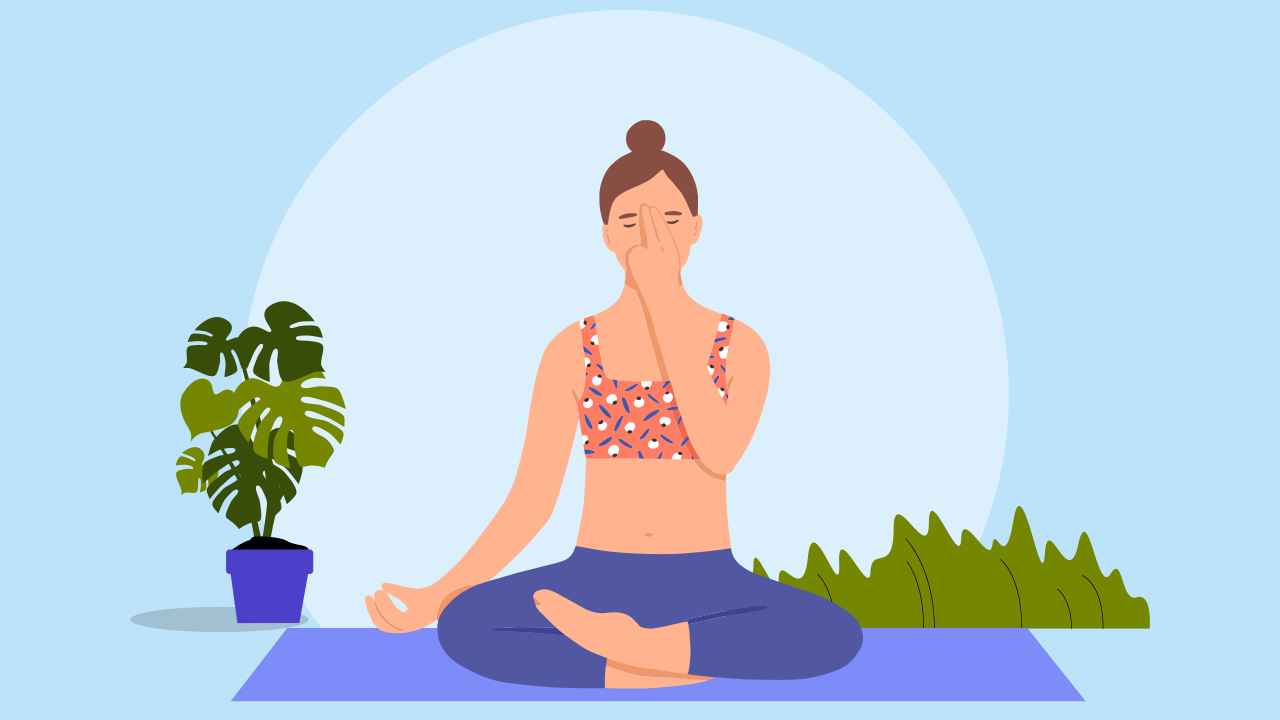
Basic Yoga Terms: A Guide for Beginners

Yoga is a universe in itself, and if you are a beginner, it might get a little intimidating and confusing to navigate through the expanse. Hence, we have curated a list of basic yoga terms, which a new yogi might find helpful. This is not an exhaustive list but is just enough to get you started.
Asana
Traditionally, the word asana refers to a “seat”. In ancient times, asanas consisted of a number of seated postures that yogis performed in order to meditate for prolonged periods. Sage Patanjali defines asana as “steady and comfortable”. It is believed that in the asana state, you can manage to keep your mind steady and at ease even when your physical body is challenged by various shapes and postures.
Asana is that collective experience of a yoga practice, which is often limited but not restricted to individual poses performed during a yoga class.
How it helps: Asanas are specific postures that have immense physiological and health benefits. They also improve our emotional and mental health by reducing overall stress and bringing a sense of peace and calm within.
Also read: Benefits of Yoga: Top Reasons Why You Should Start Today
Sanskrit names
The names of most asanas and pranayamas are in Sanskrit because many ancient yogic texts were written in this language. You might find that many have their roots in the names of native animals, Hindu gods, and other ancient Indian religious and mythological figures. Sometimes several Sanskrit names are used to describe a single pose or practice.
As a beginner, you need not memorize them all. It’s easy to find English translations for the Sanskrit terms.
Sequence
A sequence is a well-structured listing of asanas that are woven together so that the transitioning between postures becomes effortless. That way, you reap the maximum benefits of a particular pose.
How do you design it: Typically, your yoga practice should include the following components — warm-ups or Sukshma Vyayam, followed by Asanas in lying, prone, sitting, and standing positions, and finally relaxation and pranayama. You can choose to design your own flow interchanging these elements and playing with the order so as to suit your needs.
Also read: Yoga Asanas: A Guide to Getting Started
Pranayama
The word pranayama is made up of two syllables — “prana” meaning life force or the consciousness that surrounds you and is within you, and “ayama” meaning extension or expansion. Pranayama is the expansion of the vital force or bio-energy through various techniques. To put it simply, it is a set of breathing techniques through which physical and mental well-being can be achieved.
How it helps: The practice of pranayama is said to help achieve greater breath awareness and develop mindfulness by bringing peace, calm, and clarity to your thinking. With daily practice, it is said to reverse the effects caused by a disorderly lifestyle.

Dhyana
Meditation, in common parlance, means to reflect; in yoga, this term means to “focus attention on”. Dhyana, the Sanskrit word for meditation, is defined as the practice of developing one-pointedness. It is the technique by which one can gain greater awareness and control over their inner world, which includes their thoughts, emotions and feelings.
Mudra
The word Mudra originates from “mud”, which means delight or pleasure, and “dravya” meaning to draw. Mudras are a combination of subtle physical movements, which alter mood, attitude and perception, and also enhance awareness and concentration.
In a typical yoga class, you might practice any one of these mudras: Hasta (hand mudras), Mana (head mudras), Kaya (postural mudras), Bandha (lock mudras), and Adhara (perineal mudras).
Mantra
The word can be broken down into two parts: “man” meaning mind, and “tra”, which means transport or vehicle. In other words, a mantra is a tool of thought that is useful for harnessing and focusing the mind. A mantra is usually a word, phrase or syllable, which has a certain spiritual and psychological power, intention, and meaning attached to it. It is a powerful sound or vibration that you can use to enter a deep state of meditation.
Om
Om is the most sacred of all Hindu mantras. It is the holy syllable; the sound of the universe. Om is a combination of three sounds A- U- M, each referring to Brahma (creator), Vishnu (protector), and Shiva (destroyer). Chanting Om reminds you of these three powers without which life cannot exist. It is a powerful tool used to focus and quieten the mind by yogis around the world.
Namaste
Namaste, which means “I bow to you”, is often used as a greeting or a salutation of respect and reverence towards elders or acquaintances. But it has a more profound spiritual meaning. Namaste also means that “the divinity, the good, the god within me honors the one within you”. It represents the idea that we all are one. It is a reminder that we are not this body or identity, but rather vessels of divine consciousness.
Now that you know some of the basic terms commonly used in the world of yoga, it’s time to take the first step towards your yogic journey. When’s your first yoga session?
References
1. What Is Meditation? LiveandDare. https://liveanddare.com/what-is-meditation/ (accessed Mar 09, 2021).
2. Mantra. Yogapedia. https://www.yogapedia.com/definition/4950/mantra (accessed Mar 09, 2020).
3. What Is a Mantra? Chopra. https://chopra.com/about-us (accessed Mar 09, 2020).
4. Zelaya R. What is the Meaning of Om? Gaia. 2019; published online Nov 21. https://www.gaia.com/article/what-meaning-om (accessed Mar 09, 2020).














